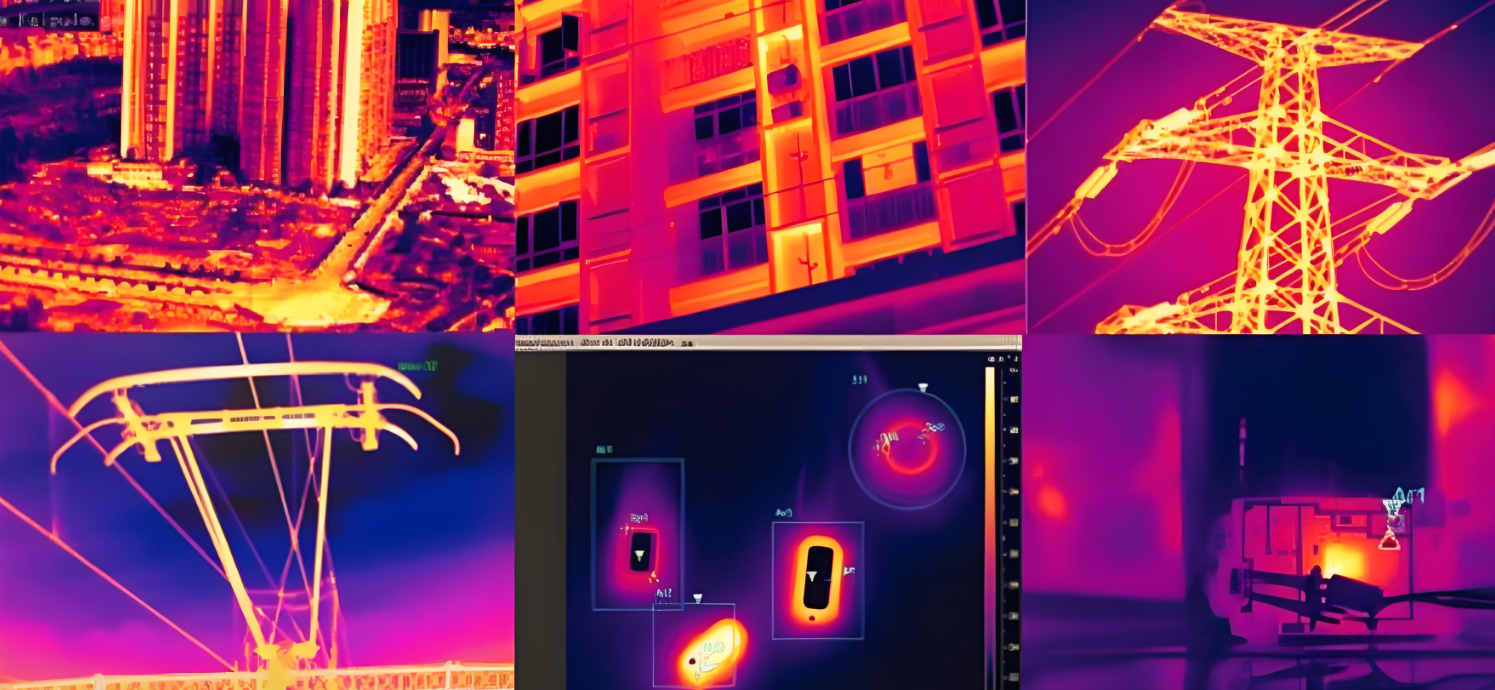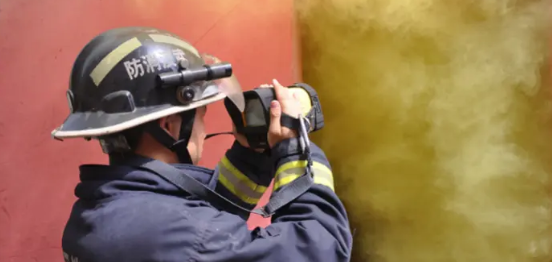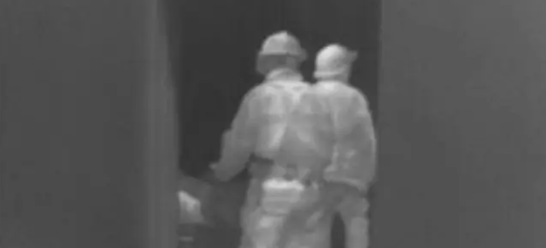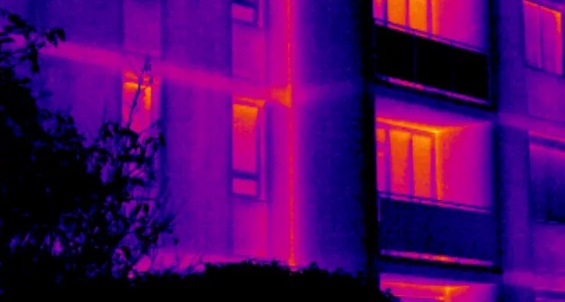Fire reconnaissance is all the information about the fire fighting object obtained by the fire brigade. It is the basis for the commander to deploy tasks and start the battle. It is one of the most important tasks in the entire fire scene. Without the data and information provided by fire reconnaissance, other fire fighting and rescue battles will lose their direction. However, in our actual combat, fire reconnaissance is often just a simple question and look. There are occasional cases of fire fighting and headless flies. Even relying on simple naked eye observation, there are also cases where greater losses occur. Infrared thermal imagers can be used as auxiliary tools for fire reconnaissance to determine the center position, burning degree and spread of the flame. On-site commanders and fighters can observe the fire scene through thermal imagers. According to the information obtained, the fire commander can correctly deploy forces and effectively extinguish the fire.
Thermal imagers are most suitable for detecting environments where the fire is not very large and the smoke is very large. When the fire is in full combustion, the fire situation can be clearly judged with the naked eye. Due to high temperature smoke and other reasons, thermal imagers cannot obtain more information than the naked eye. Another reason is that the resolution of the existing thermal imager (320*240 or 640*480) is limited, and the image resolution obtained by the thermal imager is not high enough.

When the fire is in an environment with a relatively small smoldering fire and a lot of smoke, the thermal imager can play an effective role, which is conducive to improving the efficiency of fire extinguishing and reducing water stains during fire extinguishing. If the traditional method is used, it will waste a long time to find the source of the fire, and it is difficult to walk in the factory because there are many obstacles in the factory, because the visibility is less than 1 meter under the strong light illumination. But with the help of the thermal imager, the passages and obstacles on the side of the factory can be clearly seen, and the hot spots can be initially found at a distance of about 10 meters. The fire source can be further confirmed by approaching, and then a water gun can be used to extinguish the fire within 2 minutes. The entire fire fighting and rescue battle does not exceed 5 minutes.
Assisted fire fighting
Thermal imagers can be used to assist firefighters in extinguishing fires, and the root of the flames can be judged by thermal imagers, instead of the conventional fire fighting method. This can effectively improve the fire fighting ability and extinguish fires better and faster. However, water cannot be applied at the same time when using a thermal imager, because the colder water flow will obviously interfere with the thermal imager's judgment of the flame temperature, thus losing its effectiveness. Thermal imagers can assist in finding fire points, especially hidden smoldering.
Building structure safety inspection
Thermal imagers can also perform non-destructive inspections on the safety of building structures. While fighting fires, they can continuously inspect the load-bearing parts of the building to determine whether the building has experienced a decrease in strength. Especially in the combustion of large-span steel structure plants, because the steel structure begins to reduce its strength at 300 degrees, thermal imagers can be used to determine whether the steel structure is safe and which parts need special cooling to ensure the safety of the plant and personnel.

Non-destructive temperature monitoring of liquid storage tank levels and hazardous sources
When oil tanks without insulation layers and other tanks are subjected to thermal radiation, a temperature difference will occur because the heat capacity of the material in the tank is larger than that of an empty tank. Thermal imagers can easily determine the liquid level of the liquid storage tank. It is also possible to inspect tank trucks and liquefied gas cylinders in fire scenes to determine whether the hazardous source is explosive. Special disaster sites such as petroleum and chemical industries have become high-risk disaster rescue sites because of the large number of flammable storage tanks. In such enterprise fires, the data collection of tank temperature and liquid level is particularly important for commanders to make decisions. The specific liquid level of petrochemical products and raw materials in the tank cannot be directly seen by the naked eye. However, when these liquids are stored in the tank, there will be a certain temperature difference because the thermal capacity of the stored flammable liquid is larger than that of the empty tank area. Using infrared thermal imagers, fire commanders can quickly determine the remaining liquid level in the burning tank and the surrounding tanks at the fire scene, determine the degree of danger of each tank, and take corresponding rescue measures.

Similarly, firefighters often encounter liquefied petroleum gas tanks in residential buildings at the fire scene, but it is difficult to judge whether the liquefied petroleum gas tanks in the fire scene will explode and whether they are completely cooled. Using thermal imagers, it is very convenient to measure the temperature of liquefied petroleum gas tanks and determine whether the tanks are in a safe state.
Determine the location of the leak
The vaporization of liquids and changes in gas pressure will absorb surrounding heat. It is difficult for firefighters wearing heavy chemical protective clothing to observe the condensed water vapor in the air or hear the hissing sound with the naked eye. Thermal imagers can observe abnormal changes in heat, so the location of the leak can be observed, providing a basis for further treatment. In addition, at the accident scene where there is no light or the light is blocked, firefighters cannot judge the specific location of the leak based on the sound of the leak alone. There is a temperature difference between the leaked gas or liquid and the surrounding environment at the scene, so infrared thermal imagers can be used to quickly find the specific parts of hidden leaks caused by valve damage, pipeline rupture or other related equipment damage.

Cleaning up the fire scene
In the later stage of the fire scene, facing the rising water vapor and smoke everywhere, it is difficult for firefighters to judge where the fire is not really extinguished. A lot of time is spent on carpet cooling, but there is not enough water and time for the smoldering areas that really need cooling, which often causes firefighters to run around. For example, the Fabe fire that occurred in Longgang, Wenzhou in October 2013, the huge factory building consumed a lot of time and energy of firefighters to clean up the remaining fire. But even so, some residual fires were not extinguished three months after the fire was extinguished. Thermal imagers can assist firefighters in determining where cooling is really needed, which is of great help in shortening the firefighting time.

In fire fighting, thermal imagers are used to determine the center of the fire, the degree of burning and the spread of the fire. The fire scene is observed by thermal imagers to obtain the burning and spread of the fire and determine the center of the fire. Based on the information obtained, the fire commander can correctly deploy forces and effectively extinguish the fire.
In addition, infrared thermal imagers can also help firefighters eliminate hidden fire sources in complex fires. At the fire scene, heat is often transferred to other parts through metal pipes or other metal objects, causing other flammable materials to catch fire and expand the fire. At the scene with heavy smoke and poor visibility, it is difficult for firefighters to distinguish high-temperature objects (such as metal objects, pipes, etc.) with the naked eye. With infrared thermal imagers, high-temperature objects can be clearly found and cooling measures can be taken in time, or surrounding flammable materials can be quickly transferred and removed.

